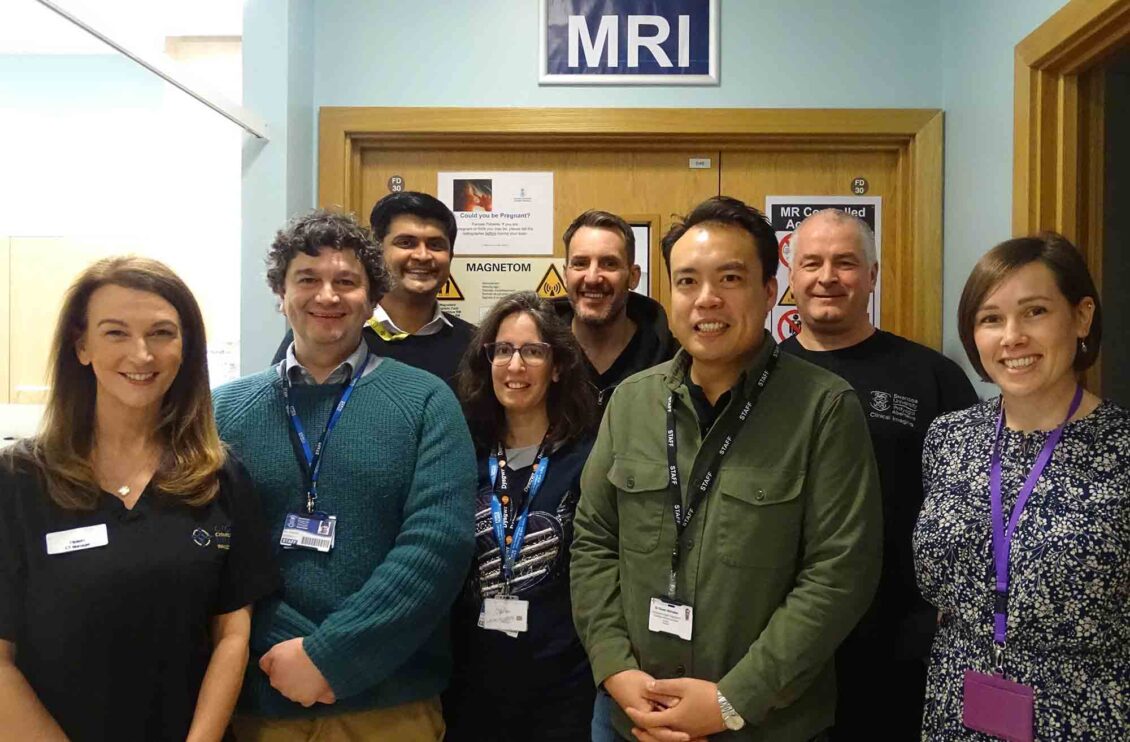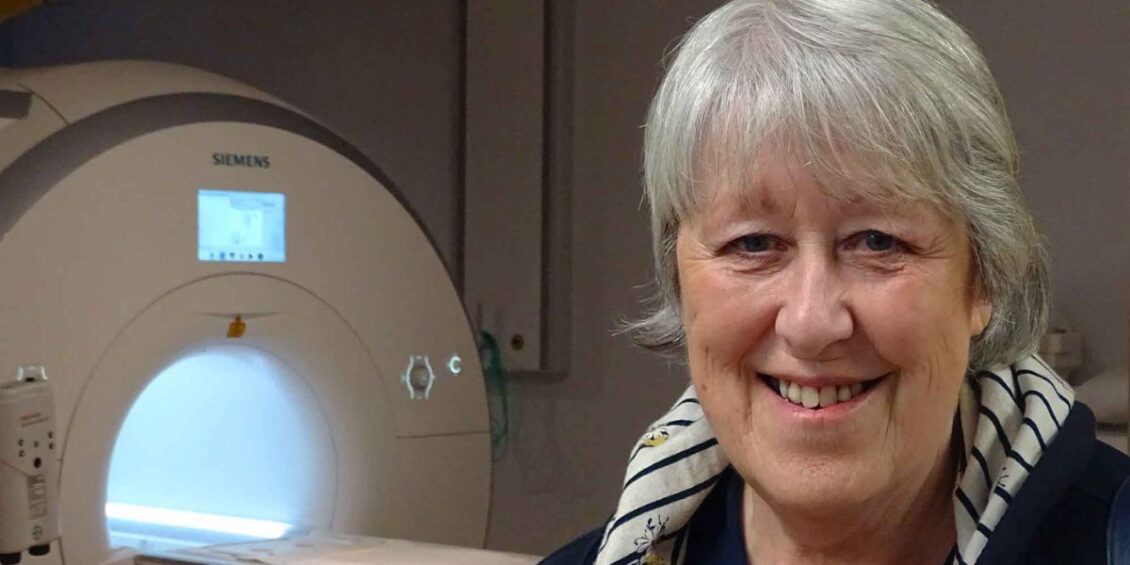People having cancer treatment in Swansea are now benefiting from far more targeted radiotherapy – made possible by charitable donations.
All patients undergo CT scans as part of the radiotherapy planning process. For many tumours, these CT images are combined with MRI scans to delineate between healthy and diseased tissue.
The MRI scans used in the South West Wales Cancer Centre in the city’s Singleton Hospital are those obtained during the diagnostic process.
As they can be several weeks old by the time radiotherapy planning starts, the tumour could have changed when the treatment begins.
Another drawback is that patients are not scanned in the same position as radiotherapy treatment. Combined, these factors could mean inaccuracies which reduce the quality and effectiveness of the radiotherapy.
Now a partnership between the cancer centre and Swansea University means patients can have CT and MRI scans in one visit. This provides the most accurate picture possible for the therapy planning.
Although it will be used for several types of cancers, it will initially be for patients with brain tumours.
The collaboration has been made possible by an award of £73,000 from the South West Wales Cancer Fund, the official charity of the South West Wales Cancer Centre (SWWCC).
This will pay for sessions on a very high-spec MRI scanner owned by Swansea University and located in the ILS2 building on the Singleton campus. Up to 300 patients will benefit over the next two years.
Consultant oncologist Dr Owen Nicholas leads the multidisciplinary team from the health board and university.
“We always need a CT scan because that is how we plan the radiotherapy and calculate the dose,” he said.
“But MRI scanners are much better for looking at soft tissue organs. The brain is a prime example. You want to look at where the brain tumour is in relation to the normal tissue.
“They are all soft tissues so look completely different on MRI. It means we can target tumours more accurately and avoid the healthy areas that we want to avoid.”
Like many centres around the UK, the SWWCC does not have a dedicated radiotherapy MRI machine.
So the scans used are those obtained during the diagnostic process, with the possibility the tumour might have changed in the meantime.
If a clinician feels a new scan is required for radiotherapy planning, a request has to be made to the diagnostic MRI department. Given the pressures on NHS services, that impacts on capacity.
The Swansea University scanner in ILS2 has been used to undertake diagnostic scans on health board patients.
But it is more powerful than Swansea Bay’s so is used predominantly for research – so capacity is not an issue.
“We are playing to our strengths,” said Dr Nicholas. “We are co-located on the Singleton site so patients can have both scans in one visit – CT in the radiotherapy department and MRI in the university.


“They are only 200 yards apart. It really makes sense as a collaboration.”
Catherine Sherry, who lives near Neyland, was the first person to benefit from this new approach.
She underwent surgery last month after being diagnosed with glioblastoma, a form of brain tumour. She said her consultant told her she needed radiotherapy as soon as possible once she had recovered from that.
Catherine had the radiotherapy mask made, had a CT scan and then the MRI scan during the same visit.
“It’s amazing,” she said. “They told me they get the results really quickly so they can look at the scans and start the radiotherapy much quicker.”
This collaboration between the health board and university also creates opportunities for research, clinical trials and advanced techniques.
And it has been made possible by the generosity of patients, families and everyone who contributes to the South West Wales Cancer Fund.
It’s just one of hundreds of individual funds that come under the umbrella of Swansea Bay Health Charity, the health board’s official charity.
Money raised is used for equipment, staff training, research and special projects for the benefit of our patients and staff, above and beyond what the NHS can provide.
Dr Nicholas said that, without the funding from the charity, the programme would not have gone ahead.
“This has completely been made possible by the charity and by all the kind and generous people who have donated to the charity,” he added.
“I think we will be able to demonstrate that this will clearly improve the quality of radiotherapy and potentially the outcomes for patients.
“This allows us to deliver really high-quality radiotherapy, predominantly at the start for brain cancer patients, but it will roll out to different cancer sites that really we did not have access to before in this region.
“Most centres in the UK don’t have this level of MRI input into the radiotherapy planning process.
“Few centres can use MRI for all their brain radiotherapy patients. But we’ll be able to do that.
“That is very exciting for our patients locally and shows the level we’re at as a cancer centre.”








Leave a Reply
View Comments